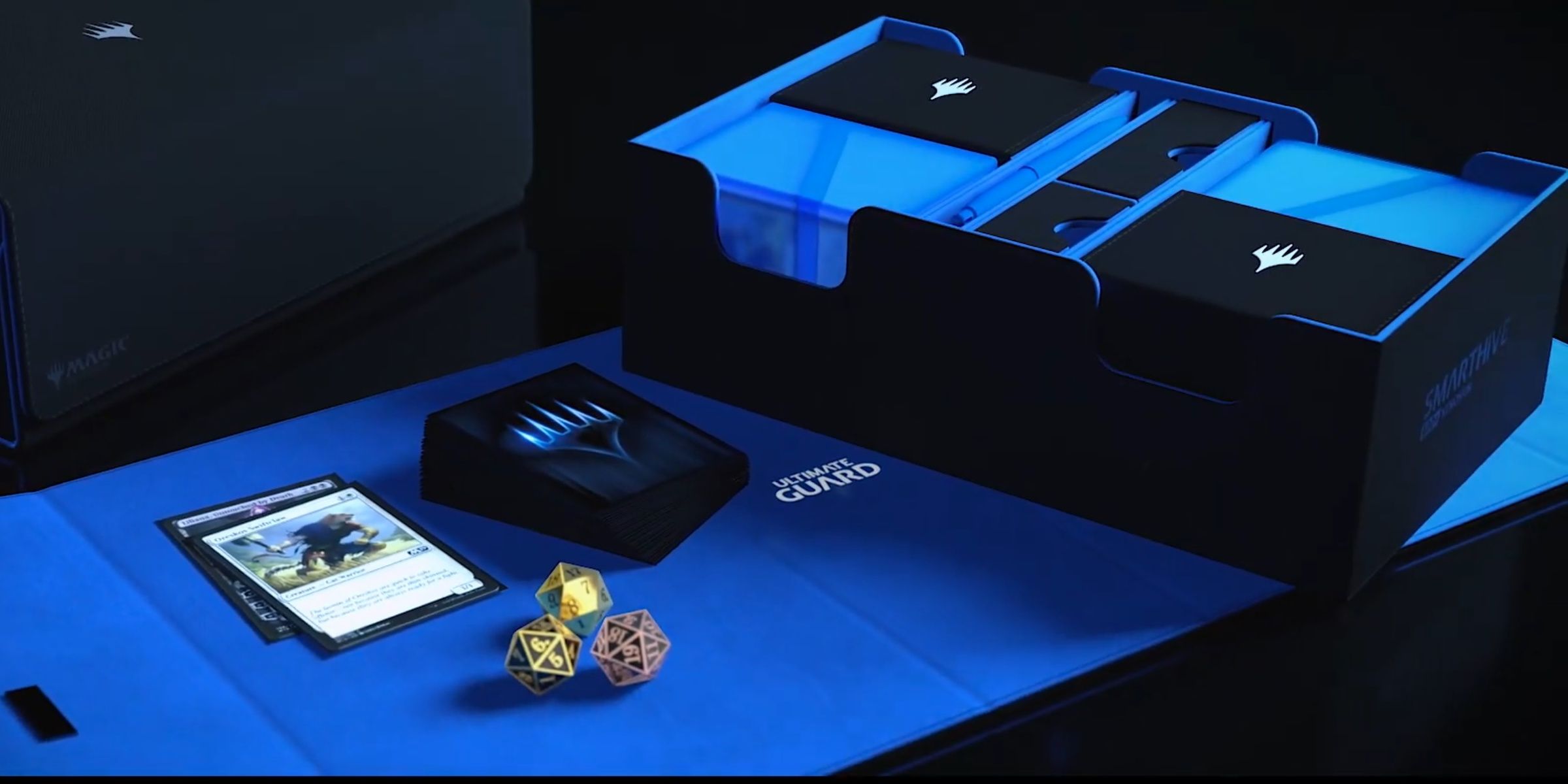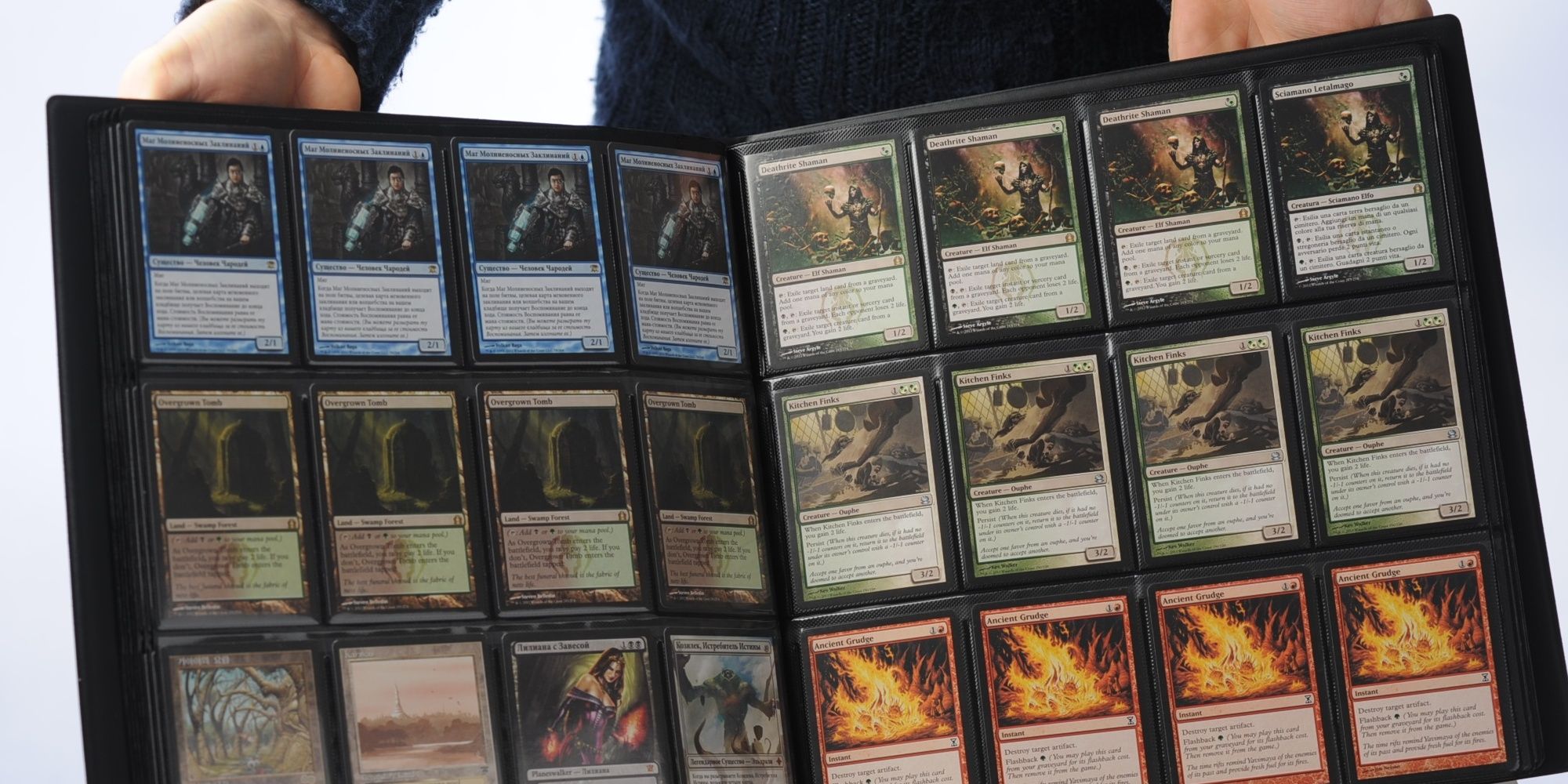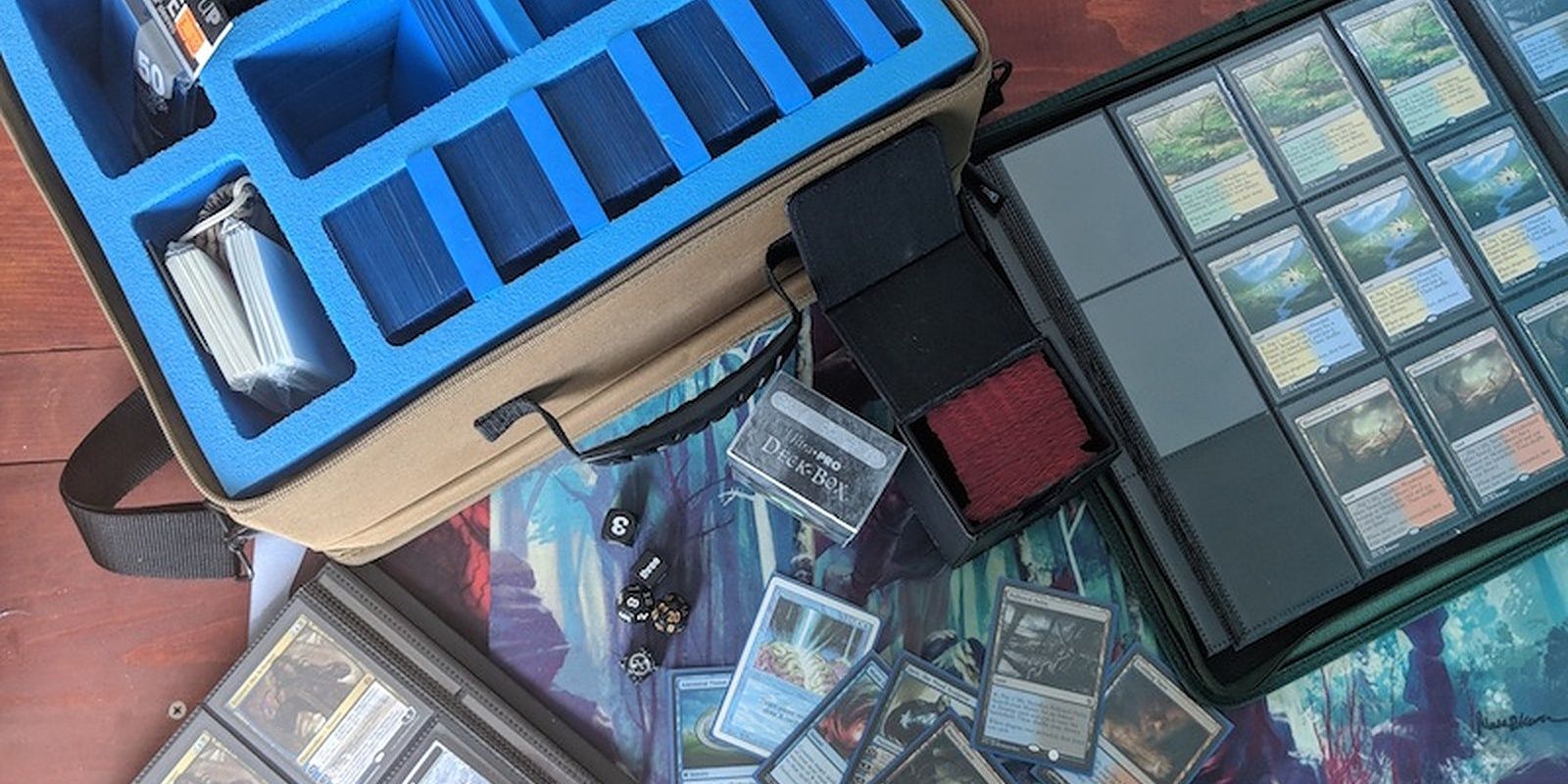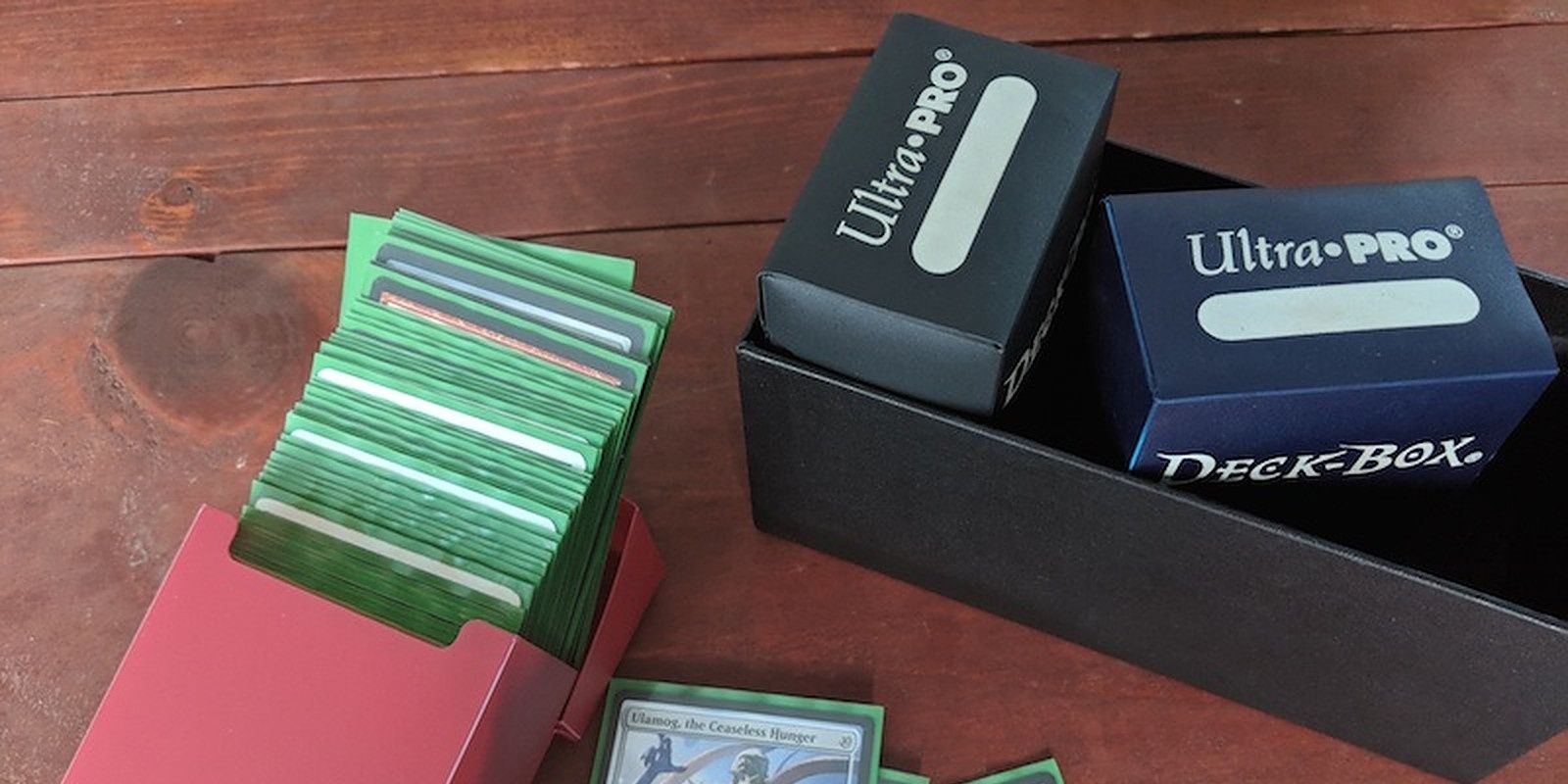
Magic: the Gathering stands as the world's first trading card game, launching in August 1993 to enthusiastic crowds. The game sold well right from the start, and over time, suppliers started cranking out all sorts of products to help card game players sort, store and protect their valuables. By now, novice and veteran players alike have countless options for collection storage purposes.
Some product lines offer higher quality or more features than others, but any of these products can help a player get their collection organized, and make the collection easier to store and transport, too. These products also vary greatly in price, with some being entry-level products for new players to deluxe items for dedicated players.

When a player sorts their collection, they will want to set aside their most valuable and trade-worthy cards, most of which will be rare and mythic rare cards, among others (such as staple uncommons). These cards will typically be placed into a trade binder, and collectors can choose from a variety of brands if they want to buy a pre-made trade binder. These may cost a pretty penny, but in exchange, such binders may offer high-quality plastic sheets and covers, and the binders may have thematic and attractive art on those covers. Some binders come with an elastic band that can hold the binder closed when it is not in use, further protecting its contents. As for size, most binders are either 3x4 or 3x3, based on the card pockets inside, though some mini binders may be 2x2 instead. Such petite binders can be used for a subset of the player's trade-worthy cards, such as their ultra-valuable cards or cards for a certain format, such as Modern or Legacy.
Another option is to buy a more conventional hardback binder with three metal rings, the sort that's found in office supply outlets. These binders are meant for hole-punched paper documents, but a Magic collector can buy individual plastic card sheets and place them in the binder. This way, as the player's collection grows, they can add more sheets to make room. Or, if the player downsizes their collection, they can take out the empty sheets. Such hardback binders are tough and can protect the cards inside, and some of them can be quite large. If a player wants to put a lot of cards in their binder, they can buy a tall one and pack it with countless sheets. By contrast, the brand-name binders may be fancy, but they have a fixed number of sheets. They can't be customized so easily.

Valuable cards end up in binders that can be shown off to other players, while the bulk cards end up in boxes. "Bulk" can describe any card that isn't intended to be traded easily, since such cards are usually low-value. For example, after a player attends a booster draft Limited event, the rare cards that the player obtained may end up in the binder, and all the rest go into the bulk collection instead. In fact, if a player has enough low-value rare cards, such cards end up in the bulk boxes instead of the trade binders. Not all rare cards are dazzling.
A cardboard box of any type can store these bulk cards, and while a shoebox can do the job, some players want more specialized boxes for the job. These boxes vary in size and length, but they are all designed with the shape of Magic cards in mind, making for a comfortable fit. Some of these boxes may contain a single long row of cards, such as around 500-1,000 of them, while a wider, bigger box may have two to four rows and may contain well over 2,000 cards in them. Such a box has internal dividers that are nice and rigid, though they typically cannot be removed to customize the box. For many players, this is sufficient, and they can use index cards or other markers to separate their bulk cards by any category of their choosing (set or block of origin, color, card type, etc.). A truly huge Magic collection may include several huge boxes to sort over 10,000 cards or more, and it's not unusual for longtime players to have a collection of that size.

Trade rares go in binders while bulk cards end up in boxes, but what about completed decks, including Commander decks? This is where deck boxes come in, which are designed with completed decks in mind (including the card sleeves). Such boxes have been made since the 1990s, and by now, deck boxes are more diverse and luxurious than ever. A casual player can buy an inexpensive but durable plastic deck box, while a more dedicated player with an eye for flair can buy an even tougher, fancier box with a magnet-sealed lid, high-quality finish and more. Some of these deck boxes are designed with Commander in mind and can store up to 100 sleeved cards at once. Some deck boxes also make room to store dice alongside the deck itself.
All this can be transported in a regular backpack or a specialized backpack with foam or plastic dividers to sort decks, dice and other supplies. Duffel bags can be made this way, too, making for easy transport to and from a game store or event.
0 Comments